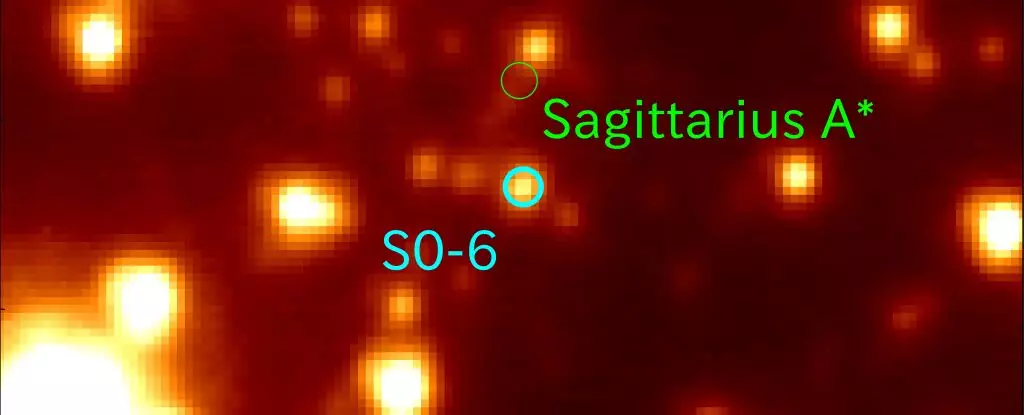At the heart of the Milky Way, scientists have long been captivated by a group of stars known as the S-stars. These stars have perplexed astronomers due to their unusual origins, given the extreme conditions surrounding the supermassive black hole they orbit. However, a groundbreaking study conducted by a team led by astrophysicist Shogo Nishiyama of Miyagi University of Education has shed light on the origins of one of these stars, named S0-6. Surprisingly, S0-6 appears to have originated outside the Milky Way entirely, making it the first star in the galactic center to have an extragalactic origin story.
The S-stars exhibit fascinating characteristics that intrigue astronomers. With their long, elliptical orbits around the supermassive black hole Sagittarius A*, these stars achieve mind-boggling speeds. In fact, the fastest star discovered in the Milky Way is an S-star that reaches velocities up to 24,000 kilometers (15,000 miles) per second as it gracefully maneuvers around the black hole. Furthermore, an S-star played a pivotal role in validating general relativity on an unprecedented scale, fueling interest in these celestial bodies as a means to deepen our understanding of the laws of physics.
To unravel the mystery behind the origin of the S-stars, Nishiyama and his team embarked on an eight-year study of S0-6 using the Subaru Telescope in Hawaii. First, they meticulously measured the star’s velocity and trajectory, confirming its orbital path around Sagittarius A*. Remarkably, S0-6 is situated a mere 0.04 light-years away from the black hole, emphasizing the extreme environment in which it resides. Next, the researchers conducted an in-depth analysis of the star’s emitted light, specifically examining the presence of brighter and darker lines in its spectrum. These spectral lines serve as indicators of the star’s chemical composition, enabling astronomers to estimate its age. Younger stars typically contain a higher quantity of heavy elements compared to older stars. However, the spectrum of S0-6 revealed a relatively low concentration of heavy elements, suggesting an age of approximately 10 billion years. Importantly, the chemical makeup of S0-6 closely resembles that of stars outside the Milky Way, particularly those in dwarf galaxies orbiting our own galaxy, such as the Sagittarius Dwarf Spheroidal Galaxy and the Small Magellanic Cloud.
Clues from Devoured Galaxies
These dwarf galaxies are currently undergoing a gradual assimilation into the Milky Way, making it unsurprising that remnants of their stars may end up in our galactic center. Over the course of its 13.6 billion-year existence, the voracious Milky Way has devoured numerous other galaxies, leaving behind traces of their existence. S0-6 serves as the initial observational evidence that these remnants may have migrated towards the galactic center. However, further confirmation is needed to solidify this hypothesis.
As with any breakthrough discovery, this remarkable finding raises additional questions that warrant further investigation. Nishiyama ponders, “Did S0-6 truly originate outside the Milky Way galaxy? Does it have any companions, or did it embark on its intergalactic voyage alone?” Addressing these queries will necessitate additional research endeavors, as scientists strive to unlock the secrets of S0-6 and its extraterrestrial journey.
The revelation of S0-6’s extragalactic origin story presents a monumental leap in our comprehension of the universe. This discovery prompts us to ponder the vastness of space and the interconnectedness of celestial bodies. As we continue to unravel the mysteries of the galaxy, phenomena like S0-6 remind us that we are but small inhabitants of a vast cosmic tapestry teeming with wonders yet to be unveiled.


Leave a Reply